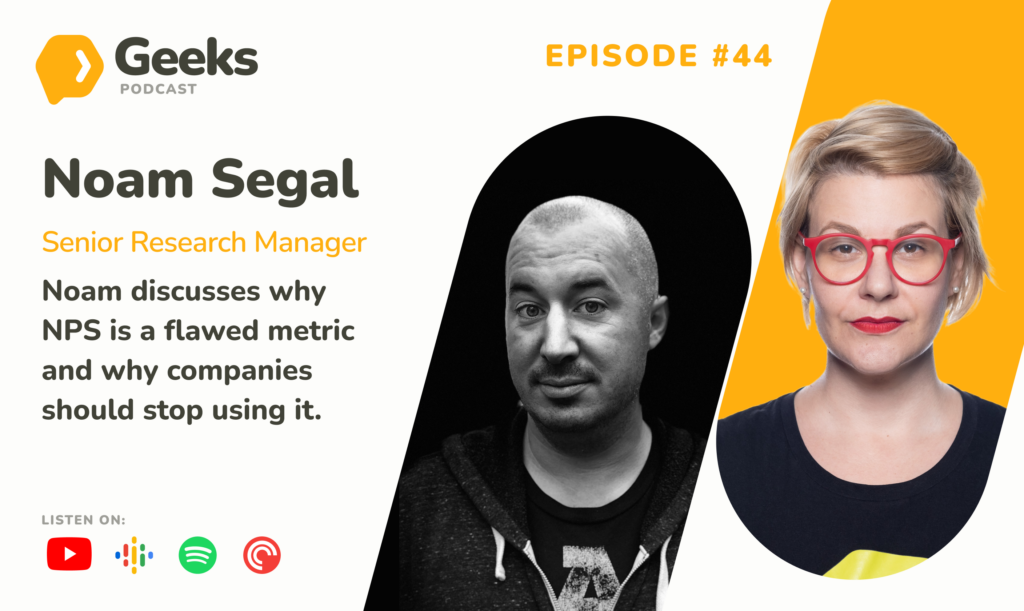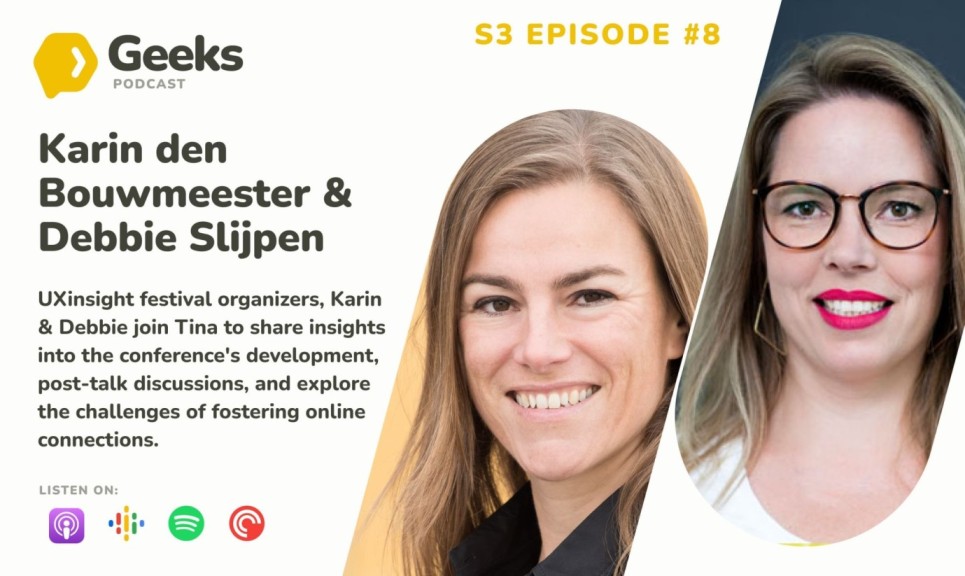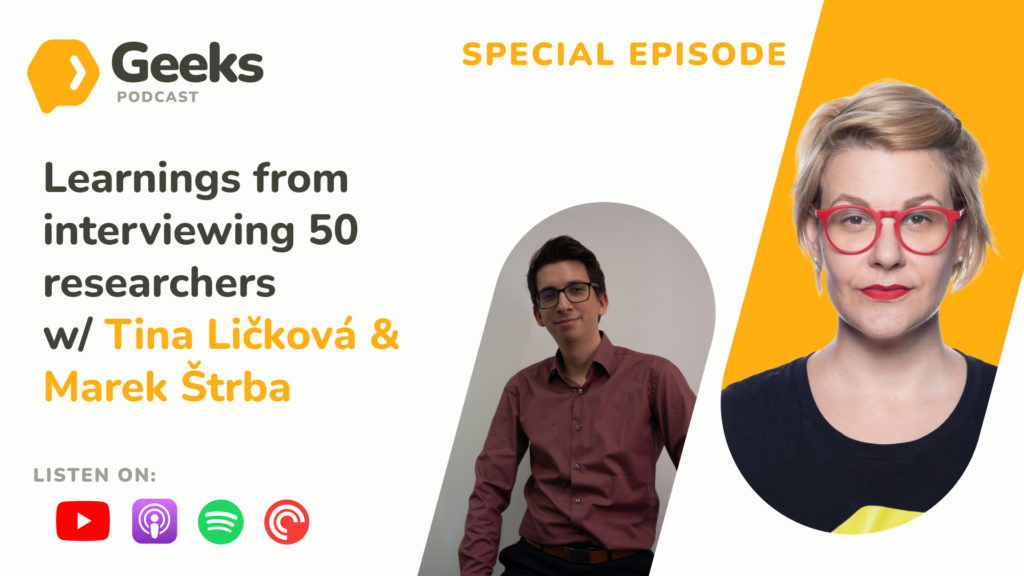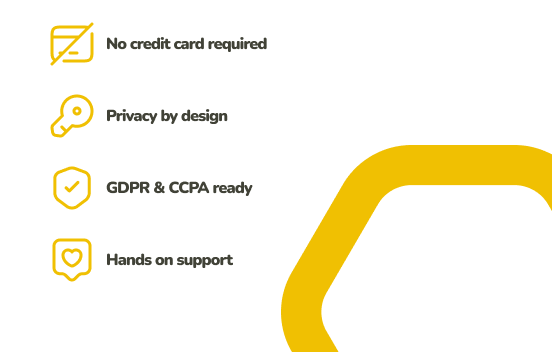Episode highlights
00:01:32 Cross-cultural research and strategy
00:03:33 Case study: A dating app in Japan
00:06:37 Understanding cultural ecosystems
00:14:21 Cultural activation toolkit
00:21:50 Practical tips for cultural research
00:25:16 Challenges in cross-cultural research
00:29:38 Planning and recruitment considerations
00:39:58 Conclusion and resources
About our guest
Chui Chui Tan is a cross-cultural strategist, advisor and author of Research for Global Growth: Strategies and Guidance for Cross-Cultural Insights.
For over two decades, she has helped companies like Spotify, Netflix, Fiverr and Bumble expand and thrive in more than 50 markets, not by simply translating content but by culturalising their product strategies, proposition and growth plans through deep cultural and market intelligence.
She works closely with product and UX teams to uncover the hidden cultural assumptions in design and decision-making, helping them build experiences that resonate globally and feel local everywhere.
Chui Chui also advises at board and C-suite level, guiding leadership teams through international growth, cross-market complexity and culturally-informed innovation so products and businesses don’t just scale, they land.
Podcast transcript
[00:00:00] Tina Ličková: Welcome to UXR Geeks, where we geek out with researchers from all around the world and topics they’re passionate about.
I’m your host Tina, a researcher and a product manager, and this podcast is brought to you by UXtweak, the UX research platform for recruiting, conducting, analyzing, and sharing insights all in one place.
This is UXR Geeks, and you’re listening to a conversation that I had with Chui Chui, who is a cross-cultural researcher, turned strategist, helping brands. To enter new markets and to the right things on those markets.
She worked for Spotify, Bumble in different countries like Columbia, Japan, and in this episode we will talk about why the approach just hire a local agency and let them do the research might be the most efficient one.
Chui Chui will also share some very practical tips and exercises on how to conduct research in different markets and how to get the buy-in from your stakeholders.
Tune in.
Chui Chui. Hello! Hey. To start off, we were just talking about the freelance life in this market and everything, but so people know what are you doing? Tell us more about who you are, what do you do, how you do it.
[00:01:30] Chui Chui Tan: Okay, thank you. So I am a cross-cultural researcher, turn strategist. So I help businesses basically to grow internationally by turning deep cultural understanding into clear and strategic actions. So I would say like my work is, it lies intersections of people and culture and business strategy. So that is a high level of explanation of what i do.
[00:01:59] Tina Ličková: what I do. Oh, okay. And when we go from a high level, could you maybe mention last project that you had or something making it probably little bit tangible?
Mm-hmm. People who are listening, like what do you do? Sure.
[00:02:14] Chui Chui Tan: I basically like I, the work I do is like when clients come to me, it could be in any forms or any departments, right? So basically, ultimately it’s to help them to understand a market and their people and the ecosystem of the market, and then to say, okay, what does that mean to our business in the market?
For example, the last one that I did was for an audio streaming company. We went to Columbia to understand a bit more about the market, the people, like what are the things that, what are the context of music listening, not just that, but also in terms of willingness to pay or to pay for sub subscriptions, for example, for music or entertainment.
And what are things actually make them tick in terms of their interactions with. Media and also not just media as such as the audio content, but also could be the media in other forms like podcasts, could be audio books, could be other educational elements, could be anything like that. It’s basically to understand the market cultural elements of the market and say, what does that mean to our business?
In that case, it was how do we understand that their willingness to pay. But it could be, for example, I did another work with Bumble before. Do you know Bumble? The dating on my website?
[00:03:39] Tina Ličková: Yeah I know Bumble, of course I know Bumble!
[00:03:41] Chui Chui Tan: could I always assume people know and people say what? And I realize they’re in the 24 years marriage of 25.
And then it’s like, why is that so Bumble online dating website. So for example, I work with them. They were in Japan already and I work with them to, they came with a brief say, we want to. Know the market a bit better and what are the things in terms of products, features and marketing directions, positioning, and also what the propositions they have that woman makes a first move for years is that, how does that match to the culture in Japan, for example?
So it’s a kind of a big piece, but ultimately that link everything together in terms of how they appear, position themselves in a market.
[00:04:28] Tina Ličková: If you put it that away or give an example of Bumble, that is exactly why I think your work is fascinating because Bumble, based on the woman decides who to like or who to ride to or get in contact to is culturally very strong driven by the culture where you operate.
And I am wondering to bring it again back to maybe a higher level, what were the decisions. That you helped. Maybe we don’t have to talk about MBO because we all are researchers. We know NDAs are strong, and we would have to pay probably with your life telling a little secret. But what are the decision, a good research study in a agricultural field can help you with?
[00:05:16] Chui Chui Tan: You mean what other things that will help us to inform a cultural insights, is that what you mean?
[00:05:22] Tina Ličková: Yeah, yeah, exactly. Thank you for reframing.
[00:05:25] Chui Chui Tan: Yeah, that’s a good question because a lot of time people think about cultural research or understanding a culture or market, they will be more thinking about, oh, we do use a research, right?
We go out and just observe what people do and, and then hear, listen to what they talk about and so on. But. When it comes to cross-cultural research, it’s actually more than that, right? You are not just studying what people say or what people show you what they do, but you have to think about the whole cultural ecosystem.
So for me, what differentiated is that you need to think about the environment they’re in. For example, I go sometimes as deep as history of the countries, right? Mm-hmm. Because the history of countries actually led to how people behave or the mentality they have. Or the infrastructure of the countries, right?
So for example, internet connections or mobile data, or even road infrastructure, depending on the domain you are in, there are a lot of different elements that might actually come into play. It could be the political elements or issues that actually. Shape how people start to behave or how people trying to behave differently because of some certain things.
To me, in that instance, sometimes it’s not just about doing research, interviewing people, but it’s actually looking out more outward into other elements that you might not think about. It could be sometimes it could be like guest research or literature review in terms of giving you a bit of foundations.
To bring in what you need to bring in into the research so that you can dig deeper into that directions. It could be sometime data that you have or internally that you can pull out, analyze it in a different way, and then do, and then give you some stories about that. It could be information from your local teams that.
Have to be careful because sometimes there are subjective views from the local stakeholders as well. But at least it can bring in as assumptions, right? So that you can bring in to do research. And this research could be in any forms that could be qualitative or quantitative, could be graphic, could be very study.
But what is important is to understand what you are trying to find out, what cultural aspect might be relevant to your domain, to the pro, to the objectives you are actually trying to. Aim for and then say, okay, these are the approach that we need to use to answer these questions to help us to validate or invalidate certain assumptions to fill in the gaps of the unknowns and as well.
[00:07:56] Tina Ličková: Why would you say is that important to know those nuances and what is the risk of not knowing them and not responding or addressing them?
[00:08:08] Chui Chui Tan: It’s very, that is a very good question because one of the things that I always emphasize the difference between standard research like you do in a home country versus cross-cultural research.
One of the things that I always use a pyramid is you see, you hear what people say. You can observe what people do, but ultimately there’s another layer for cross-cultural research is to understand what triggers those behavior, the roots, what is the things that motivate them to behave? This certain way to your questions is, oh yeah, we see, like in Germany, like people tend to be more careful about money.
Their view about money is different and they, they have, they’re more careful about security and certain things and why it’s important to understand the political, what actually drives that crazy. Because sometimes knowing that is actually help you to find underlying reasons of those behavior. So for example.
I give you examples of a research when I went to Kenya to do a research with Babyo Health and it is a digital tech company, so our aim was to, we got actually Gates Foundation sponsoring this to understand how to actually help Kenya to adhere to their medications for H-I-V-T-V and mental health and.
One of the things that we actually identify during, as we go along the research, we identify support group is very important. So actually people go quite often because it’s something that they offer medically and. But as we listen to what people are saying, they say, oh yeah, I sometime go to it, but now I don’t go to it because we actually do contribute money each time we go to, and I actually don’t have the money to do that anymore, or I, and we thought initially that is a fee, like a fee to join something because that is our Western view about that, right?
You go somewhere, you give a fee and then you join a membership or something. But it wasn’t like that. So we could just stop there and understand, okay, there is a monetary. Elements within that, and it would stop people from going to support groups. So we might need to look into other way to help them to get support and so on.
But what we did is that we came back. I actually look into what actually frequent that behavior or that kind of practice, right? So it turned out it’s something called harabi. So Harabi is what? Being popularized by their first president when. He was trying to build the country back and he realized that actually he needs the community to actually start supporting himself as well, rather than just relay everything to the government to do it.
He came out with this Haram B culture where PE, community Society actually get together and collaborate and support each other, not just within the financial side, but also in other sites that they have. Projects together that you help people to get the neighborhood up and so on. And that is also what led to something called Charma, which is very popular in Kenya where it’s a kind of micro lending.
Like you, you kind, it’s not like a bank, but it’s micro lending that for small businesses and so on. We understand that is because of the culture where. But actually the money wasn’t for a fee, but it was actually to collect so that in case anyone in the group needs money because they suddenly need medical health or for certain projects or whatever, they will actually use that money to sponsor that person to help that person because we are a family, right?
Or it could be a project where they use their money to say, okay, we want to do some sewing or something. We use that money to. To have the benefic for the whole groups, the whole society. So knowing that the mentality, what actually bring people together, what are the things that they’re familiar with that actually encourage us to think actually community support and being together is actually a very strong element within this.
Culture, so sure support group needs money that is actually stopping them from going, but what are the elements within that we can use to make them better? So we can use a similar concept where we are supporting each other to be better and use that kind of social elements to encourage people to adhere and so on.
It help us to look into things from a different angle to find more innovative idea based on. The roots of it. Otherwise, you might miss the whole, you might miss the whole mentality. That actually will guide you to a different path that you could come up with a creative ideas solutions for that as well.
[00:12:55] Tina Ličková: And I wouldn’t even say those are niche information, but those are really fundamental information about how a culture is ticking and what is important in the culture. Very few people who are listening to us are doing cross-cultural research in such a extent as you are, but there are definitely people who.
I don’t know, have countries close to them and their companies entering the country and we all think, oh, we know our neighbor. But that’s also coming to be, be tricky because you can overlook things based on your assumptions. What would you advise a company or researchers running research for those companies how to prepare for cross-cultural study or study in a different land culture, whatever.
[00:13:41] Chui Chui Tan: I think one of the key message I want to give out is if you do cross-cultural research, don’t just study users, but actually study the cultural context so you don’t dive into user needs and the behavior and so on, but you actually need to step back and think about the whole other elements, other aspects that is important, like social norms.
What are the. Culture aspect that might actually influence that. So one of the things that, one of the questions I get as well when I talk about it in in conferences or workshops sense is people asking, how do I know what culture aspect is relevant to this market or to my domain? And where do I even start?
So one thing that actually prompted me to create. A toolkit. I call it cultural activation toolkit. Basically, I narrow it down to 27 cultural aspects that I think actually can tell as much full story as possible about a country or market. And its people, any culture. So some of the examples could be authority and hierarchy.
So when in that elements you might want to look into, okay, for this country, where do they sit and how do they actually. Respond to the authority figures or the authority concept in their society, and what does that mean to our products when it comes to it? Or it could be cultural aspect, like digital infrastructure.
Oh, that might prompt you or any researcher to think about, okay, let’s look into digital infrastructure in this market and how does that is going to influence my domain? Is that any. Impact or not, because certain culture aspect might not be as relevant to your domain than any other thing. So there’s agenda and rules.
So that actually doesn’t come into play for certain domain. For example, it might not put into the domain of audio books consumptions. You know what I mean? Then you can actually put that aside, not having to look into, so that is one of the things that you can do to start off, but also. Sometime it’s good to step back as well when you’re just starting to go into the new market.
Step back, say, first of all, you might want to say, why do I want to focus on this market to start with? You might already have a business decision. Say, this is what we want to go into, so you might skip this, but if not, sometimes you might want to look into. Why these countries or this market was well for us to focus on next, either to launch or to grow further.
I have activities where I actually look into different elements. For example, opportunities and efforts that is needed to, if you are doing, to go in and then where you are in the market positioning and so on. Market share and so on. Effort versus opportunity really to define whether that is a good market to go into.
So that’s first step, but some of you. Some of the researcher might need to skip that because it’s already given to them by the board. But then also that is okay if let’s say it is that market we are going to concentrate on what do we know already, right? So we might want to think about, there are some hypothesis, there are some stereotype subjective views.
There’s some from other data that we collected. In the past or so on. It’s important to gather them together to see what you already know and what is missing and what is hypostasis. In my book, for example, research for Global Growth, I mentioned the four bucket exercise. It’s basically as simple as that.
You’ll have four buckets. That first bucket is known facts. Second bucket is strong hypothesis. Third one is weak hypothesis. And then the fourth one is unknowns bucket. It’s a exercise that you can bring the relevant stakeholders. It could be the key sponsor stakeholders, it could be the experts in the area.
It could be researchers or data scientists because they already know some data. It could be the local teams that sales teams or whoever who have that. Bring them together to say, okay, what do we know about this market? And then put it according to the buckets. The trick here is that a lot of people, you, if you run this research, a lot of people will tend to want to put it in the non buckets because everyone think they know it.
All right? So I know it. I believe it because I’m from that country, or I believe it because I had a project before in that country, and they cannot put it in there. It’s very dangerous, risky in that way because in that bucket, whatever is in that bucket, you are supposed to use the what is in the bucket to make decisions without having to further explore or validate and validate.
If it is wrong one, then you are actually going to make the wrong decisions. What anomaly did is to make sure that anyone who put it in there have. References to back it up and they have to be updated references. They have to be valid references rather than someone say, this could be a past research input or could be a data or whatever.
I remember running this with, I think it’s 15 or stakeholders like in C-level. That is for online job portal, so it’s a bit like India and, but it’s in Asia and Asia Pacific as well. I remember doing that remotely during pandemic, and so many posts on this bucket. And then as I start asking each person to give references, I can see on my corner eyes, all the postage starts to move to other bucket because it’s like, oh no, I don’t have the answer for that.
And so amazing to see that. And so yeah, they start to move it to strong or maybe weak because strong is the next one, right? Like I don’t have to give any, but I think it’s still right. So that is very important and it’s a. Really good. There’s so many layers of benefits of these activities because you bring people aligned and then aligned in terms of what we know and what we don’t know and where we are heading to the gaps and so on.
But it’s also helped to collect all the information, data, insights, and everything into one place. And then it helps researcher even better to say, where’s the knowledge gap? And can we combine some of the elements within strong and weak hypothesis bucket into. Actually, if we answer these research questions, it will answer both and then also identify what research approach is useful.
Mm-hmm. Beneficial that it helps to shape a lot of things and doing that. So I always encourage researchers to do this activity, but actually this activity being used for other things, other teams as well, like growth or whichever. But it’s very useful for. Researcher to do that.
[00:20:22] Tina Ličková: We’ll be right back after a short break with a commercial message from our Sponsors.
Hello UXR Geeks. This is Tina speaking. You might already know that this podcast is brought to you by UXtweak, a research tool. And research tools are great until you need five of them to run a proper study. That’s why I actually use UXtweak. It handles everything from concept testing to usability checks, both moderated and unmoderated.
It also takes care of the analyzers with no message spreadsheets, no frustrating dashboards or endless reports. Just clear insights, ready to share. So if you’re curious, go to UXtweak.com website and start for free, no credit card and no strings attached.
Before I go to my question, could you a repeat all those four buckets? The, the name of your book…
[00:21:28] Chui Chui Tan: The four bucket is non buckets. Strong hypothesis bucket, weak hypothesis bucket and unknown bucket. Okay, so all four of them? Yeah. And the name of my book is Research for Global Growth Strategies and Guidelines for Cross-Cultural Insights.
[00:21:49] Tina Ličková: Let’s maybe now go to the, you’ve been practical, but really the practical thing, because I think researchers get it, but if maybe some product managers are listening to us or some people who are not so familiar with the cross culture, there are maybe companies and you have probably experienced with all, let’s be, let’s hire somebody, a local agency and a moderator and a translator, and then we like, yeah, we are done, or we are set up for the research.
It sounds logical, but it might be not very practical or very efficient. Why? Why is it not so efficient, and what would you advise against it?
[00:22:29] Chui Chui Tan: So that sense of bringing that up, because that is one of the things that is a misconception, perceptions that people have, right? Oh, we can just get local teams, local agencies, local moderator, and then we have translator.
Maybe sometimes they don’t even have translator, they just wait for the locals, agencies or partners to bring back the edit report to them and does it. And the thing is, when you do cross-cultural research, you often will learn something new because it’s, uh. Territory that you didn’t know. We always was saying, oh, we get a lot from this research, and it’s, we learn about this, we learn about that.
But I want to challenge it sometimes to say, how do you know you actually get as much insights as you can from that market? Are you, it could like out of the 60 minutes, 15 interviews, 12 interviews or whatever, you might actually get to learn even more if you’ve done it properly. And then second one is like, how do you know they actually.
Are curate and no biases because one of the things like in my book actually, I quote him like Y Chip Chase, I dunno about him. So he is also doing a lot of his is extreme cross-cultural research. Like they go into Kastan and all those have their own studio and like places they haven’t been, it’s expensive, big projects kind of thing.
But he even, he quoted him because. There’s this kind of, if a client actually the other day on the call of saying the same thing as well, there’s one element that if you are too familiar with the culture, sometimes you have biases or you actually for missed the inherent. Insights that you probably didn’t know of that is important for a global company.
For example, there are a lot of cases where I have my local teams doing research and everything and Oh, can you ask that questions more about this part? Like payment and how do they pay and why and everything. And they actually really confused like, why do you ask this? Because this is how we do it. It’s very common here.
Like why you’re so excited about this part or just like, because that is so important and. And unique to this culture because I have the global view, right? So I know that I have the business sense of what their direction. So that is so important to look into. So there’s a danger when us, as a human being in a familiar environment, we tend to be immune to what we do and forget that actually there’s a differences and what we do is actually not familiar for other people, other culture and so on.
That is very important in terms of doing it properly as well. Actually, the second part of my book is quite practical in terms of preparing and running, conducting internet general research because there are also a lot of elements that you actually look into. We will touch on that practical side, but one thing that I want to talk about is that how researchers, standard researcher, if they do research without thinking more on the cultural element, as opposed to if you do it properly with.
More cross-cultural skills and experience. That is a difference. So for example, if we talk about. Let’s say both researchers gave, well in doing research in India, trying to figure out why people reluctant to pay for an audio services, for example, even though they actually spend hours listening to music after 10, 12 interviews, one first keep coming up saying, I just don’t feel the need to pay.
So actually this is a real case. So the researcher in the internal research of the company actually have no experience cross-cultural research, so they categorize it as, oh, perceived value is different, and they have low willingness to pay the suggestions that they came out with. We could offer free trials, which they already offer.
We could get better pricing tiers or discount bundles, and that might actually increase their willingness to pay. That is very logical and data driven and consistent with the Western consumptions patterns. But for me, I will actually stop and ask slightly different questions. So I will think about what does that mean when they say, I don’t see the need to pay in this context?
Is that really mean? That as what the other researcher was saying, like just black and white. We, we just need to nudge them and get them to pay. But what I know as a, as a cross-cultural research is that in many Indian households, culturally, like for example, younger generations, they’re spending decisions not purely individual.
So they’re very influenced by family dynamics and cultural priorities, or even moral values, for example. So subscribing for something purely for leisure or pleasure. Or convenient, it might feel unjustified or selfish, what they say about, I don’t feel the need might actually mean I don’t feel justified in asking my parents to spend on this, or I can’t prioritize this over my studies or saving.
So I actually refrain the entire insights into this is not about just perceived value, it’s about the perceived. Legend of like personal trend spending, like the emotional and cultural return on investment, if you like, of subscribing is very unclear to them. So. The questions I will ask is now is instead of how do we actually increase their willingness to pay is how do we culturally make paying for audio streaming services more legitimate for them?
So it could be bundling more focusing on the education side because they care about self-growth, or it could be. Say as a productivity, right, rather than just for leisure. Or it could be because listening to music actually helped me on the productivity side. Or it could be to have a family elements with it that were, so the benefit is more collective.
We heard here that a lot actually within that, for example, in India and some African comp countries as well, like people justify to pay for. Maybe Netflix or for example, or audio and video streaming, but not for music because. Movies is for everyone to enjoy. I don’t feel guilty spending their money and use spending the household money expenses to, but it’s everyone enjoying the kids mom and everyone.
But if it’s music, it’s mine. So I feel like really selfish and doing that. There’s a culture elements within that you either have to interpret it. More differently, not just what people told you when it comes to culture. Link that to culture elements or when you know of that you can actually prompt more questions during the research to Oh yeah.
And you talk about the family things and to understand. So there are a lot of things to figuring out rather than. Just do the research. There are more examples. For example, when doing the interviews, how people react, right? Some people say, yeah, in Japan, yeah, they’re very polite. But actually is that just yes or is that just no, but politely and so on.
Yeah, so that’s another element as well. And then there’s a practical side. The book touch on a lot as well, so like. When you are preparing, even for recruitment, you thought recruitment is easy, but there’s so many things to think about or planning. You think it’s easy to just plan the slot like you planning, but you have to think about time zone, which is fine.
You have to think about working days. So for example, in some Arabic countries that their weekend is Friday and Saturday rather than a Saturday and Sunday. And then you have to think about when Ram done happening. How do you work out your timing and planning? And then you have to think about praying time.
I was doing research in Malaysia and Indonesia, the praying time across five times, five times a day, and you want to do a few sessions in one day and the sessions might be 90 minutes, so it will cross a lot. So you have to think about when to slot them in and so that they don’t have to stop to. Have to pray for five minutes and then come back because that interrupt your conversation flow.
And also praying time is different from country to country as well, so depending on the sun and everything. So. There are a lot of elements and the other example is like we plan for a research in Brazil. Whenever the football is happening, you know where the story is going. We didn’t even think about World Cup, Brazil,
[00:30:56] Tina Ličková: The football thing is applicable to many other countries as well.
[00:30:59] Chui Chui Tan: Yeah other countries, but we have to do it on that week because of sudden Christmas coming out.
That, and so yeah, so that will affect attendance and know like whatever. So there are a lot elements to think about, even for planning. And then you have recruitment. You have to think about incentives. Many years ago I was doing research for Rich Carlton, right to think about the luxury people with wealthy to book hotels in different countries and how do they do that?
So we actually went to Qatar, want to talk to high net source individual, and we. We pay them. We offered to pay their incentive at that time. This is like more than 10 years ago. That is a lot of money. $750 per one hour. And, but we went over like 80% no show. I was just like, we all flew out from America from the new can.
Everything. We just, we want to make sure we got to talk to people. That was a mistake we make, right? Uh, just myself, but also the local team as well. High net. Individuals don’t care about money, right? They have lots. How do we actually appreciate their time? We think about prestige status. So we even initially we say, oh, we are going to send a driver to you not working.
Call them. They say, Inala let’s the go side. Then we know it’s the there in the turnout because they have their own drivers, so they don’t need us sending them. So what we did is. The location we did the research is actually RIS Carlton Shake, Ritz Carlton Resort, but they actually built like a shake, a marble shake, and very grand.
One, we actually get the general managers to call them to say, we are actually going to give you a private tour to places that actually we don’t open to public, and then we can show you that works like a magic all turn up. And one even brought their assistant walk into people. I just like, we all only recruit one for this participants.
And turned out it was the assistant that to show us how they actually. Book the hotel because he will be sitting there and then the assistant will be lean on on the laptop and open up every single hotels rooms. And then they will discuss how to do it. And we wouldn’t have seen that or expect that. Of course, high net was individuals might not book their hotel themselves, but they want to have input, but then the assistant doing it and so on.
Mm-hmm. But it’s only preparing for incentives and created so much of. But stress, I have to, to make sure that people turn up. There are a lot of all these different small tips from very beginning planning, choosing local teams to recruitment, to planning, and how do you work with local team? How do you work with local simultaneous translator or translation for you to listen in?
And then get to the other point. So there are a lot of different small things that people overlook because they don’t think it’s important or they didn’t know. Actually. There are so many things that you need to think about to make sure it’s fine. The other examples as well is I was doing research in Pakistan during pandemic and Zoom call.
And normally I would test the Zoom call with them and they would just say, oh yeah, it’s fine. Everything is good. And then first session is that after 40 minutes. We all get kicked out. You know what is happening? They were using the free version. I was just like, I should have asked that. But because you wouldn’t have thought, because in some culture it’s fine to, because of the economy and said it’s fine to use free versions of those things and then you cannot adapt to that.
Things like that you have to change or in Bangladesh as well. Like I didn’t specific say that. You need to make sure the room. They invite people to their lab. I actually view it and my client and myself view it remotely and manage it remotely, but they, I would expect the room to be quiet and I keep hearing people talking and turn out.
There’s other people meeting there and other people, they just sit in a room with other people to have that interviews and that seems to be fine. So I think it is one thing to say is I don’t assume what we think is, we know. Other people know it or what we think it should be, is this the way that other country a culture will think it’s makes sense to do as well.
So there are a lot of tips and things that I mentioned in the book so that you don’t make the mistake and make in the last 17 years or so.
[00:35:24] Tina Ličková: Very nice. Just one last question as we are a little bit running out of time. I can imagine when you are somehow negotiating with a client, you can tell them like, oh, these are the risk and this is what you can win with a good built research design.
But what about researchers who are not so well equipped or well experienced like you? What are arguments could they bring to the table of let’s do it culturally sensitive?
[00:35:52] Chui Chui Tan: I think for cross-cultural research, it’s. I did actually get some pushback sometimes for senior stakeholders saying that, oh yeah, we had done very well in this country.
Just replicate that and then we will be fine and in other country. So I think the four bucket exercise is a good thing for them to see where the knowledge. Gaps is so that they realize actually we didn’t know as much as we think we know. And then the other things is also, it’s very important as researcher, like any projects doesn’t even have to be cross culture to bring your stakeholders into the journey from the very beginning.
So that is important. Not going to get into detail on that because that apply to any sensor I think. In terms of understand where I think it’s kind the culture and for bucket exercise is useful, and then also to think about, talk about cultural insights as a way to reduce risks for the company, right?
What are the risks or impacts It would be if we actually launch it in the wrong way or we even offend someone, or the culture or the religions of that countries. That is even worse thing, like the highest risk, you damage the brand, it’s hard to come back and then you’ll have other level of, okay, the risk might be slightly different, but it will be like you launch it, no one talk about it or the brand is gain, no traction at all.
Is that because of the products? Is that because of the precisioning? Is that because of the marketing? We market the wrong thing. It is hard for at that point to know what is the problems. It’s talk about it as a risk reductions for, as a cross culture as well. If let’s say, uh, the stakeholders actually say, oh sure, we do research, and then you bring back that result, how do you present it in a way so that they see the value so that they want to do it more in the future or actually buy into it?
I think one of the things I always say that you researcher is very good being empathized with. DA users, but we also need to emphasize with the, the stakeholders, right? Like we spend as a researcher, spend hours and weeks and months, for example, to do that research. You have time to digest, you have time to, and you have to think about when you present to the stakeholders.
They haven’t been in that journey sitting there. Listen to all the research, analyzing the risk insights for a long time. Like you, they only have few hours to digest what you’re going to tell them. So make sure that the way that you present is easy. They can re relate to them so that they can digest what you actually present to them, easily different scenario, different case use case you might actually want to present differently.
You might have a different stakeholders that digest information slightly from the others. So you might want to see that. But I think when you talk about cross-cultural insights, I always emphasize even more on the step storytelling. So you need to bring, not say, this is how Mexican does. This is how Saudi Arabian do this, and this is what they want.
But you need to bring them the story, right? The story behind what triggers them. People love stories because they can then relate to that when it’s called cultural. I’m doing actually a workshop, training workshop for a localizations company, a team within a company, and they, we talk about how to convey those guidelines that they have, localization guidelines, we stories so that their stakeholders could actually understand why you are suggesting this guidelines so that they buy into it a lot more.
And also. Think about the way you present the information as well, right? You want to use the metaphor that they can relate. So for example, your stakeholders are all maybe German, for example. Then you want to use similar mentalities, similar metaphor that they can actually talk about. They can relate. In the story you’re going to tell them it’s actually making them feel like they know the markets a lot better and so on.
Yeah. There are different stages bringing them in, and then when you present, how do you present to them? And so.
[00:39:58] Tina Ličková: Thank you so much for sharing with us and I definitely advise to follow you on LinkedIn and buy your book because it’s full of the stories and full of the practical tips on preparation and how to conduct access through research.
[00:40:10] Chui Chui Tan: Thank you.
Thank you for listening to UXR Geeks. If you enjoyed this episode, please follow our podcast and share it with your friends and cliques. Your support is really what keeps us going.
If you have any tips on fantastic speakers from across the globe, feedback, or any questions, we’d love to hear from you too. Reach out to geekspodcast@uxtweak.com.
Special thanks go to our podcast producer, Jana Filušová, our social media specialist, Daria Krasovskaya, and our audio specialist, Melisa Danišová. And to all of you. Thank you for tuning in.
💡 This podcast was brought to you by UXtweak, an all-in-one UX research tool.
